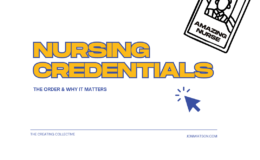The Article: Case, M.B. (2011). Oncology nurse navigator: Ensuring safe passage. Clinical Journal of Oncology Nursing, 15(1): 33-40.
Big Idea: This integrative review of 18 primary nursing research studies – 13 of which focused on breast cancer – identified nurse (navigator)-sensitive patient outcomes.
Survey Says!: Among the studies, Case found nurse navigators do impact patients and systems, increasing patients’ self-care, impacting patient satisfaction scores, reducing hospitalizations, streamlining care, and improving proper utilization of available resources.
Quotable: “The patient navigation model shares characteristics with case management and patient advocate service models [reference]” (p. 34).
“When the nurse uses expert clinical judgment, systems thinking, and advocacy to identify complications early or promote adherence to appropriate treatment in the complex, vulnerable patient, safe passage has occurred” (p. 38).
So What?: It is evident nurse navigation is here to stay as it impacts other healthcare professionals, patients, and healthcare systems. As the number of oncology nurse navigators rises, expect to see other chronic disease specialties include nurse navigators based on the clear value proposition.






Thomas A. Coss
September 16, 2011 12:52 pmI’m of a mixed mind on Nurse Navigators. One one side, each and every one of us have provided such services to friends and families, none of that is new. When the nurse navigator is employed by an individual institution to a degree they are at the same time saying their not very efficient at what they do and how well it is communicated.
Would it not be better that nurse navigators were separate concerns, partially paid by the parties they serve? Here’s is where my biases come in. I’m of the belief the the value of a nurse is independent of the institution for whom they work. The party to whom the navigator is first obliged needs to be the patient and the business model needs to be in harmony with that principle.
nursetopia
September 16, 2011 1:04 pmI agree to some extent. You’re exactly right that navigation is not new. Social workers and nurse case managers have been doing these things for a while (to a certain point). In my mind, those roles are either inpatient or outpatient specific. However, the nurse navigator crosses all facilities and sites to smooth the continuum of care.
I understand what you mean about a facility employing navigators is basically saying they do a poor job of providing those services, and the same point can be made for almost every other job position within a healthcare institution. Rightly so, many organizations are saying just that – we have failed you, but we are working to make it better.
I’m not so sure I follow you on the nurse navigation payment model, and perhaps that is because of the primary population I serve – the uninsured and underinsured. I do think some individuals would be willing to contribute to the payment, but there’s no doubt nurse (and lay and social work) navigators contribute to an organization’s bottom line via reduced length of stays, shorter appointments, fewer ambulatory-sensitive hospitalizations, and proper utilization of complementary resources within the respective organization. If you’re talking about the uninsured and underinsured that are often the most high-risk and costly service groups – often receiving the majority of an organization’s “charitable care” – then that’s a whopping ROI for the cost of navigators.
nursetopia
September 16, 2011 1:05 pmBy the way, Tom, I *love* it when you comment, and we have such great discussions!